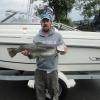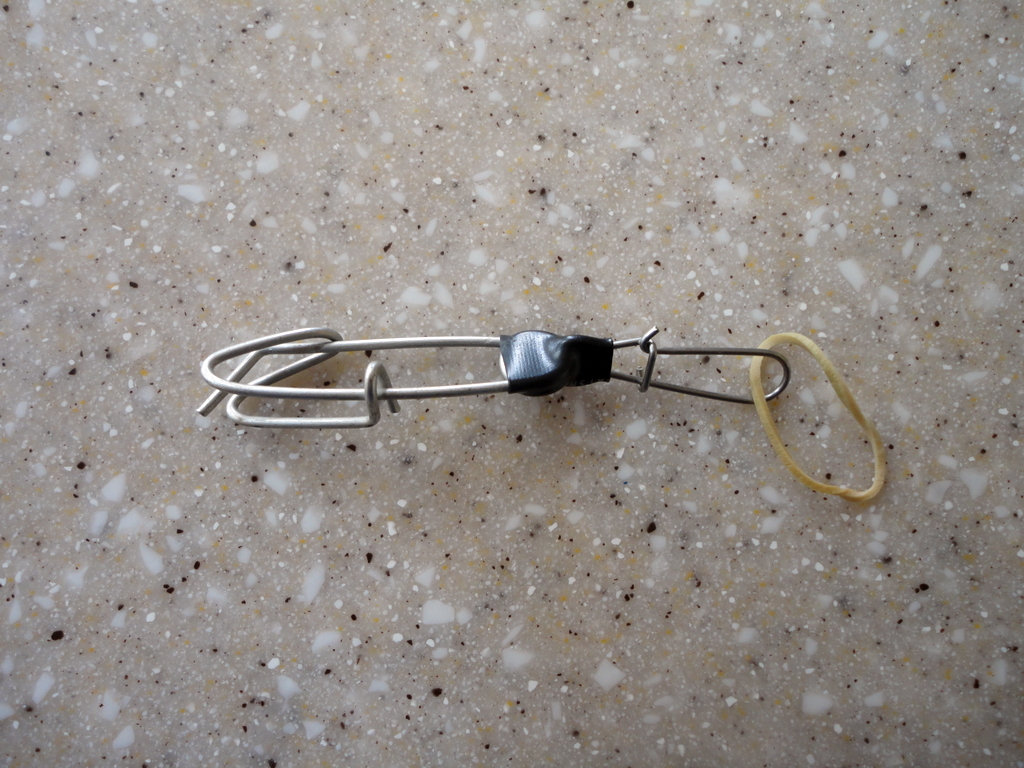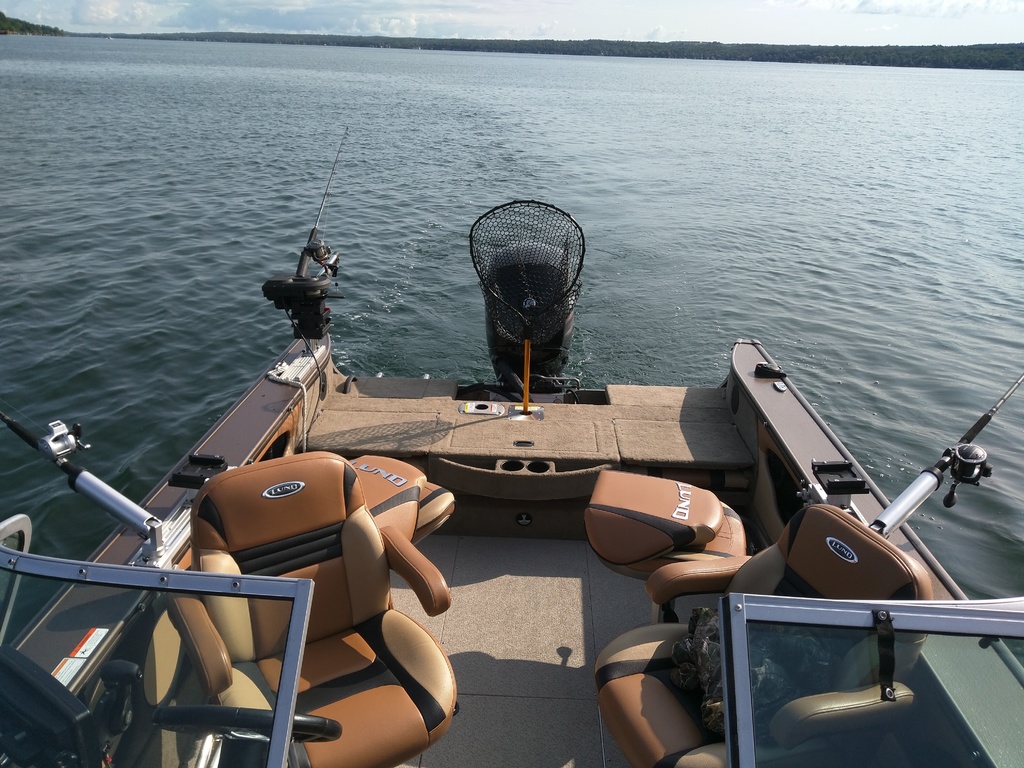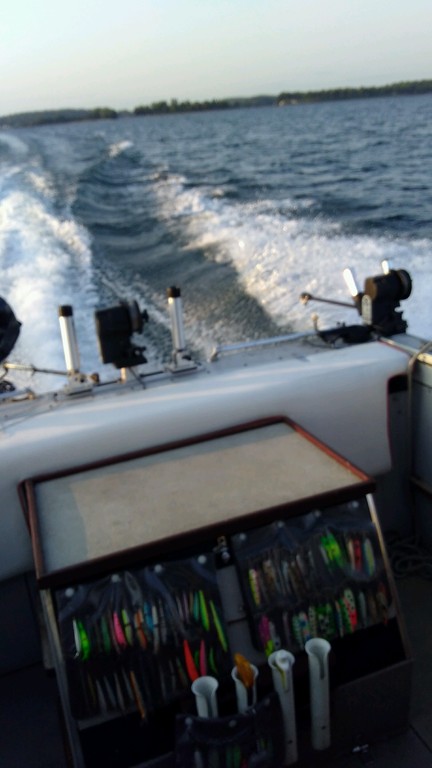-
Posts
13,872 -
Joined
-
Last visited
Everything posted by Sk8man
-
-
-
Might want to use the GREEN Frog tape (Walmart etc.) It doesn't allow stuff to get under the edges of it like other tape.
-
Try using the split ring on the release )if it has one) and fasten it to the front of the trot line clip and use tshrink wrap like I did. Another option if itdoesn't have a split ring is to wrap copper wire around the back or the releaese fastened to the trot line clip and shrink wrap that or you could use hot glue to connect
-
-
You're fine with that setup for minis
-
-
-
Rob - I think some useful advice would be to get the downriggers witrh adjustable booms if you can and that way you may increase your options. Next actually try out various placement options by getting into the boat with your intended equipment (even in the driveway) and try out positioning everything to insure that it will function as you wish. Sometimes things that sound like good ideas don't translate well without actually seeing how they function. Consider running the downriggers with SLIDERS rather than stacking them. That way you can run 2 lures off each rigger without all the monkeying around and it allows you to run other stuff by freeing up the number of rods used. I often catch half the fish on sliders. The only time I don't run them is when I'm running very shallow water. related to my first comment set up all stuff you will be running in a trial run even without doing any serious fishing to see if there are any problems (tangles etc.) Placement of rod holders is especially critical n that although something may have sounded good from someone on their boat it may be in the way of other stuff on your boat....Try out the divers with both spin docs and flashers in terms of how they relate to the riggers as they both behave differently in the water. Many of the "gizmos" can wait until you have the primary situation figured out (e.g. placement of holders, downriggers etc.) having a good reliable depthfinder is important and a kicker as well for two reasons control of trolling speed and potential emergency use.
-
It is worth noting that JIm (Pequod1) is someone I regard as one of the top pan fishermen in the this part of the state and although I would very much like to share panfishers optimism and desire to look at the situation as something that we can possibly rely on humans to "correct" or let Mother Nature do her thing to re-generate the necessary lake balance as part of the natural cycle of things I also am more than a little bit concerned about human nature and the current self centered and selfish attitudes present in today's culture and how this translates into this situation. For example, many of the megastructures that have replaced the little seasonal cottages dotting the shorelines of these lakes (e.g. Canandaigua Lake) are owned by folks that may use them a few times per year so they aren't really concerned with possible consequences of changes in use of the land or water. They may have their 4 ski boats parked in the their hoists some dripping gas and oil into the water, their lawn pesticide applications done by routine services who sloppily apply it in or near the roadways and edges of the water leeching into the lake and various other convenience items impacting the environment and of which they are totally detached. For the multitude of wineries popping up along the shores and the existing farms I don't see the state insuring that they have burms or barriers along any potential areas where there chemicals or waste can be prevented from entering these waters. The bottom line is the guiding factor in todays cultural mentality. The point here is that there is a complex combination of many stressors impacting these lakes (not just Seneca either) and they are already out of control in terms of their effects on the water quality, the populations of fish and other organisms residing there, and the situation is NOT getting better. I don't think there is a great chance of banning all boat use on the lakes, asking people to desist in building these "status" monstrosities along the lakes, or even stop applying lawn treatments or removing the vineyards and farms to allow the natural processes to perhaps jump start themselves and restore balance. As fishermen though we can control what we do in terms of limiting over harvesting, keeping only the amounts of fish to be used as Jim mentioned and not decimating the schooling species while they are vulnerable, or keeping mainly the largest females ripe with eggs.
-
-
-
Most of the exhaustion comes from scrubbing the crap off the deck because it is though they are taking laxatives
-
If your riggers are Cannons it might be worth getting extendable booms for them and that way you have a variety of options for running. I sometimes extend one of mine out in back of the trolling motor to keep it away from the other stuff and that motor as well (e.g. on turns) and as you mentioned you should be able to rig them without leaning way out if on swivel base.
-
Congratulations on a beautiful male landlock
-
I agree that is a hell of a pic Chris
-
-
The Anglers Pal rod holders are fine for light rods such as toplining and walleye fishing but you could lose a dipsey rod and reel very quickly using them for that. You need heavy duty metal rod holders with a solid base (usually reinforced from the underside of the gunwale). Most folks use rod holders from Burts, Big Jon or Cisco for this purpose as they are made to withstand the constant strain exerted on them as well as the instantaneous whacking by a big king. I would think the Diawa 47LC would be considered "marginal" and should have the drags replaced with carbon fiber washers at the very least if used (Tuna Tom is reasonable) but they would also probably be best used on say the Finger Lakes where there aren't big kings . I think capacity wise the Magda Pro 30 might also be marginal for the 1,000 ft of wire required. I have used the 45DX with wire on the Fingers OK but for Lake O use I have the Diawa 57's because they have a 20 lb carbon fiber drag....again related to the king salmon concerns. Both the reels you mention might be used during the early Spring for browns however.
-
The one essential thing as far as the rods go is to have a twilli tip on them or a roller tip to reduce the friction and cutting of the wire on tip and guides.The twillis are only a few bucks and they have adapters for different rod diameters. If you go with a roller tip make sure the side plates on it are steel and not aluminum or they too can cut through.
-
Nice going. Pays to think out of the box when things aren't coming together where you are
-
-
-

Oak video 8/17
Sk8man replied to rdebadts's topic in New York Fishing Reports - Lake Ontario (South Shore)
Nice video and editing. Nice not having to watch several minutes of just bent rods -
I don't think you can go wrong doing it with a Whaler and I've seen dozens of them on the Cape as well as the lakes around here that have done it with ones smaller than you are considering. The big drawback to other older boats is the wood integrity in the transom and stringers. Having a solid motor is 90 percent of the game in my view.
-

for sale: can HOW MUCH IS MY BOAT WORTH?
Sk8man replied to Lucky Linda's topic in Classifieds - Buy, Sell, Trade or Rent





